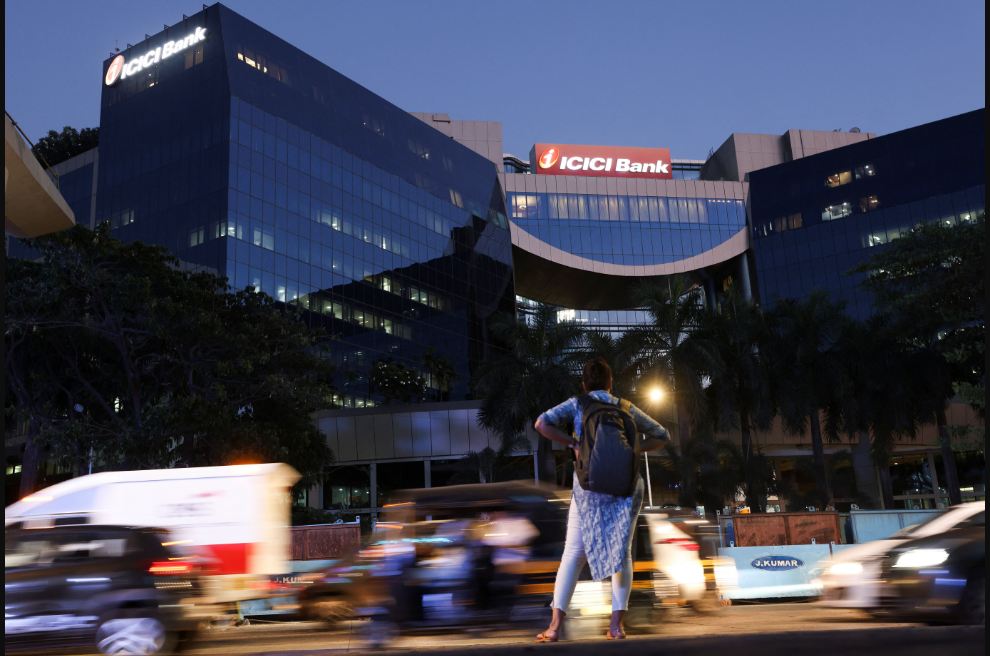ICICI Bank Surpasses Profit Forecasts, Strengthens Growth Outlook
New Delhi – India’s ICICI Bank has posted stronger-than-expected quarterly results, supported by lower provisions for bad loans, steady loan growth, and improving asset quality — signaling resilience and stability in the face of market headwinds.
India’s second-largest private sector lender, ICICI Bank, delivered an upbeat performance for the July–September quarter, exceeding profit estimates and showcasing its strong fundamentals despite a challenging financial environment.
The results highlight the bank’s prudent risk management, robust loan growth, and improving asset quality — positioning it well for continued expansion in the second half of the fiscal year.
ICICI Bank reported a standalone net profit of ₹123.59 billion ($1.40 billion) for the second quarter, compared with ₹117.46 billion a year earlier. This marks a 5.2% year-on-year increase and comfortably beat analysts’ forecasts of ₹122.36 billion, according to data compiled by LSEG.
The strong performance was largely attributed to a sharp 26% reduction in provisions for potential bad loans and losses, which fell to ₹9.14 billion. This decline in provisions helped offset a moderation in treasury income, which had been impacted by volatile bond yields during the quarter.
“Lower provisioning reflects our disciplined lending practices and the strength of our credit portfolio,” said Sandeep Batra, Executive Director at ICICI Bank. He added that while provisions may rise modestly in the coming quarter due to seasonal factors, the overall asset quality remains stable.
Loan Growth and Core Banking Strength
The bank’s net interest income (NII) — the difference between interest earned on loans and paid on deposits — rose 7.4% to ₹215.29 billion, supported by a 10% growth in domestic loans.
Within this, small and medium business loans grew the fastest, reflecting strong demand from India’s expanding entrepreneurial and MSME sectors. Retail and large corporate loan segments also contributed, albeit at a slower pace.
Deposits grew 7.7% year-on-year, reflecting sustained trust among customers and solid liquidity management. The net interest margin (NIM), a key indicator of profitability, remained steady at 4.3%, demonstrating the bank’s ability to balance loan pricing and funding costs even amid changing interest rate dynamics.
Navigating Market Volatility
The bank’s other income — including treasury operations — grew modestly by 5%, despite a decline in treasury income from ₹6.8 billion to ₹2.2 billion compared to the same period last year.
“The decline in treasury income was mainly due to a tough environment in bond markets,” Batra explained. Rising bond yields during the July–September period put pressure on the fixed-income portfolios of most Indian banks.
Nevertheless, ICICI Bank’s diversified income sources and stable lending growth provided a cushion against such short-term fluctuations. Analysts noted that the bank’s performance demonstrates resilience and its ability to adapt to market cycles while maintaining profitability.
Improving Asset Quality and Economic Outlook
The lender’s gross non-performing asset (NPA) ratio improved to 1.58% at the end of September, compared with 1.67% in the previous quarter. This improvement underscores effective risk monitoring and a healthy credit portfolio.
The broader Indian banking sector has witnessed a steady improvement in credit demand after a period of moderation. Recent tax cuts and policy reforms have boosted market sentiment, and analysts expect lending activity to accelerate further in the latter half of the fiscal year.
ICICI Bank’s consistent focus on operational efficiency and customer-centric innovation continues to set it apart in India’s competitive banking landscape.
The lender has expanded its digital banking ecosystem, making banking more accessible and seamless for millions of customers across urban and rural markets.
Balancing Growth and Stability
The Reserve Bank of India’s decision to cut its benchmark interest rate by 100 basis points this year has helped stimulate borrowing and investment. However, such rate cuts can temporarily compress margins for banks.
“While interest rates have adjusted downward, we expect margins to remain range-bound,” Batra said, reflecting the bank’s confidence in sustaining profitability through efficient balance sheet management.
Industry experts view ICICI Bank’s results as a positive sign for India’s broader financial stability. With steady deposit growth, rising business lending, and robust asset quality, the bank appears well-positioned to capitalize on India’s economic momentum heading into 2026.
As India continues to emerge as a global investment destination, ICICI Bank’s strong fundamentals make it a key player in driving financial inclusion and economic growth. The bank’s consistent performance and prudent strategies serve as a benchmark for operational excellence within the private banking sector.
With a solid capital base, expanding loan book, and a continued focus on innovation, ICICI Bank’s outlook remains optimistic. Its latest results reinforce investor confidence and underscore the bank’s ability to thrive even amid macroeconomic challenges.


